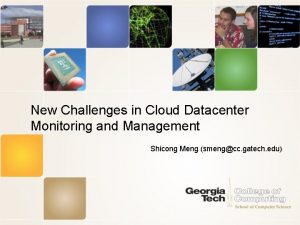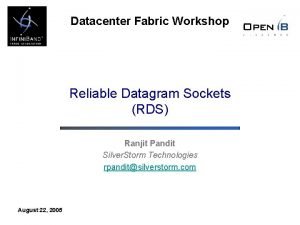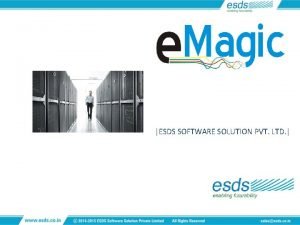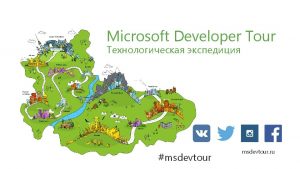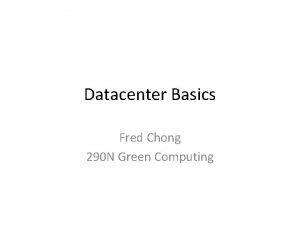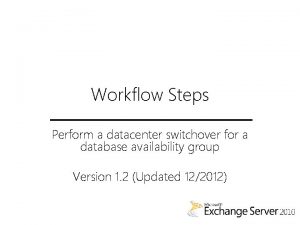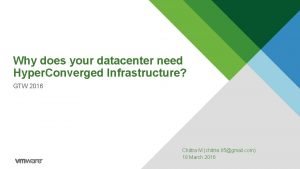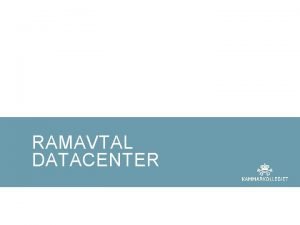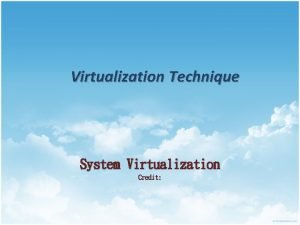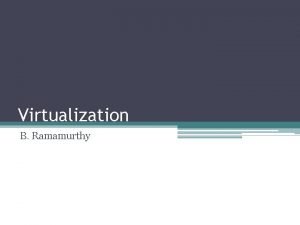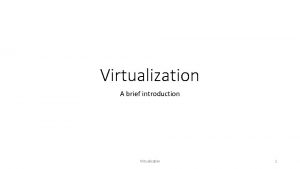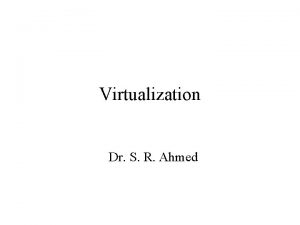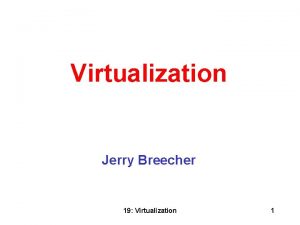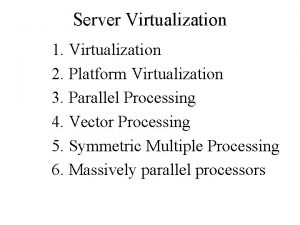Virtualization for DataCenter Automation Virtualization for DataCenter Automation











- Slides: 11

Virtualization for Data-Center Automation

Virtualization for Data-Center Automation • Data-center automation means that huge volumes of hardware, software, and database resources in these data centers can be allocated dynamically to millions of Internet users simultaneously, with guaranteed Qo. S and cost-effectiveness. • Google, Yahoo!, Amazon, Microso, HP, Apple, and I BM companies have invested billions of dollars in datacenter construction and automation. 2

Server Consolidation in Data Centers • In data centers, a large number of heterogeneous workloads can run on servers at various times. • These heterogeneous workloads can be roughly divided into two categories: 1. Chay workloads and 2. Noninteractive workloads. Chay workloads : ü may burst at some point and return to a silent state at some other point. A web video service is an example of this, whereby a lot of people use it at night and few people use it during the day. Noninteractive workloads ü do not require people’s efforts to make progress after they are submitted. High-performance computing is a typical example of this. At various stages, the requirements for resources of these workloads are dramatically different. 3

Server Consolidation in Data Centers • It is common that most servers in data centers are underutilized. A large amount of hardware, space, power, and management cost of these servers is wasted. • Server consolidation is an approach to improve the low utility ratio of hardware resources by reducing the number of physical servers. • Among several server consolidation techniques such as centralized and physical Consolidation, virtualization-based server consolidation is the most powerful. 4

Server Consolidation in Data Centers • Consolidation enhances hardware utilization. Many underutilized servers are consolidated into fewer servers to enhance resource utilization. Consolidation also facilitates backup services and disaster recovery. • This approach enables more agile provisioning and deployment of resources. In a virtual environment, the images of the guest OSes and their applications are readily cloned and reused.

• The total cost of ownership is reduced. In this sense, server virtualization causes deferred purchases of new servers, a smaller data-center footprint, lower maintenance costs, and lower power, cooling, and cabling requirements. • This approach improves availability and business continuity. The crash of a guest OS has no effect on the host OS or any other guest OS. • It becomes easier to transfer a VM from one server to another, because virtual servers are unaware of the underlying hardware. 6

Virtual Storage Management • In system virtualization, virtual storage includes the storage managed by VMMs and guest OSes. Generally, the data stored in this environment can be classified into two categories: 1. VM images and 2. Application data. • The VM images are special to the virtual environment, • The application data includes all other data which is the same as the data in traditional OS environments. 7

• The most important aspects of system virtualization are encapsulation and isolation. • Traditional operating systems and applications running on them can be encapsulated in VMs. • Only one operating system runs in a virtualization while many applications run in the operating system. • System virtualization allows multiple VMs to run on a physical machine and the VMs are completely isolated.

• To achieve encapsulation and isolation both the system software and the hardware platform, such as CPUs and chipsets, are rapidly updated • However, storage is lagging. The storage systems become the main bottleneck of VM deployment. • Parallax is a distributed storage system customized for virtualization environments. • Content Addressable Storage (CAS) is a solution to reduce the total size of VM images, and therefore supports a large set of VM based systems in data centers. 9

Cloud OS for Virtualized Data Centers • Data centers must be virtualized to serve as cloud providers. • The table summarizes four virtual lnfra structure (VI) managers and OSes. • These VI managers and OSes are specially tailored for virtualizing data centers which own a large number of servers in clusters. • Nimbus, Eucalyptus, and Open Nebula are all open source software available to the general public. Only v. Sphere 4 is a proprietary OS for cloud resource virtualization and management over data centers. 10

